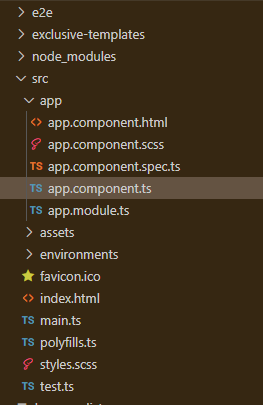Angular MDBootstrap Collapse Component
Last Updated :
06 Jan, 2023
MDBootstrap is a Material Design and bootstrap-based Angular UI library that is used to make attractive webpages with its seamless and easy-to-use component. In this article, we will know how to use Collapse Component in Angular MDBootstrap.
The Collapse Component indicates a collapsible element i.e. the content that will be shown or hidden with a click of a button.
Syntax:
<button mdbBtn (click)="gfg.toggle()" mdbWavesEffect>
Click here
</button>
<div mdbCollapse #gfg="bs-collapse">
<p>Content</p>
</div>
Approach:
- Download Angular MDBootstrap from the official site.
- Extract the files and change them to the working directory.
- Install npm in the current project using the following command:
npm install
- After creating your project folder i.e. appname, move to it using the following command:
cd appname
- Start the server using the following command:
ng serve
Project Structure: After complete installation, it will look like the following:

Project Structure
Example 1: This is the basic example that illustrates how to use the Collapse Component in Angular MDBootstrap.
app.component.html
<div id='gfg'>
<h1>GeeksforGeeks</h1>
<h4>Angular MDBootstrap Collapse Component</h4>
<br />
<div>
<button mdbBtn color="primary"
class="waves-light"
type="button"
(click)="gfg.toggle()" mdbWavesEffect>
Click Here To Toggle!
</button>
<div mdbCollapse #gfg="bs-collapse">
<p>
MDBootstrap is a bootstrap-based angular UI
library that is used to make good looking<br/>
webpages with its seamless and
easy-to-use component.
</p>
</div>
</div>
</div>
|
app.component.ts
import { Component } from '@angular/core';
@Component({
selector: 'my-app',
templateUrl: './app.component.html',
styleUrls: ['./app.component.css']
})
export class AppComponent{}
|
app.module.ts
import { BrowserModule } from "@angular/platform-browser";
import { NgModule } from "@angular/core";
import { BrowserAnimationsModule }
from "@angular/platform-browser/animations";
import { AppComponent } from "./app.component";
import { MDBBootstrapModule } from "angular-bootstrap-md";
import { FormsModule } from "@angular/forms";
@NgModule({
declarations: [AppComponent],
imports: [
BrowserModule,
BrowserAnimationsModule,
MDBBootstrapModule.forRoot(),
FormsModule,
],
providers: [],
bootstrap: [AppComponent],
})
export class AppModule {}
|
Output:
Example 2: In this example, we have collapsed the text in the ngAfterViewInit lifecycle in Angular MDBootstrap.
app.component.html
<div id="gfg">
<h1>GeeksforGeeks</h1>
<h4>
Angular MDBootstrap Collapse Component
</h4>
<br />
<button mdbBtn color="success"
type="button"
(click)="test.toggle(); togglebg()" mdbWavesEffect>
Click Here To Toggle
</button>
<div mdbCollapse [isCollapsed]="true"
#test="bs-collapse">
<p *ngIf="togglevisible">
MDBootstrap is a bootstrap-based angular
UI library that is used to make good looking<br />
webpages with its seamless and easy-to-use component.
</p>
</div>
</div>
|
app.component.ts
import { AfterViewInit, Component, ViewChildren } from "@angular/core";
@Component({
selector: "my-app",
templateUrl: "./app.component.html",
styleUrls: ["./app.component.css"],
})
export class AppComponent implements AfterViewInit {
@ViewChildren(AppComponent) collapses!: AppComponent[];
ngAfterViewInit(): void {}
togglevisible = false;
togglebg() {
this.togglevisible = !this.togglevisible;
}
}
|
app.module.ts
import { BrowserModule } from "@angular/platform-browser";
import { NgModule } from "@angular/core";
import { BrowserAnimationsModule }
from "@angular/platform-browser/animations";
import { AppComponent } from "./app.component";
import { CollapseModule, MDBBootstrapModule }
from "angular-bootstrap-md";
import { FormsModule } from "@angular/forms";
@NgModule({
declarations: [AppComponent],
imports: [
BrowserModule,
BrowserAnimationsModule,
MDBBootstrapModule.forRoot(),
FormsModule,
CollapseModule,
],
providers: [],
bootstrap: [AppComponent],
})
export class AppModule {}
|
app.component.css
#gfg{
margin: 40px
}
.a{
border-radius: 5px;
border: 2px solid black;
padding: 10px;
}
|
Output:
Reference: https://mdbootstrap.com/docs/angular/advanced/collapse/
Like Article
Suggest improvement
Share your thoughts in the comments
Please Login to comment...